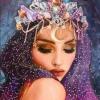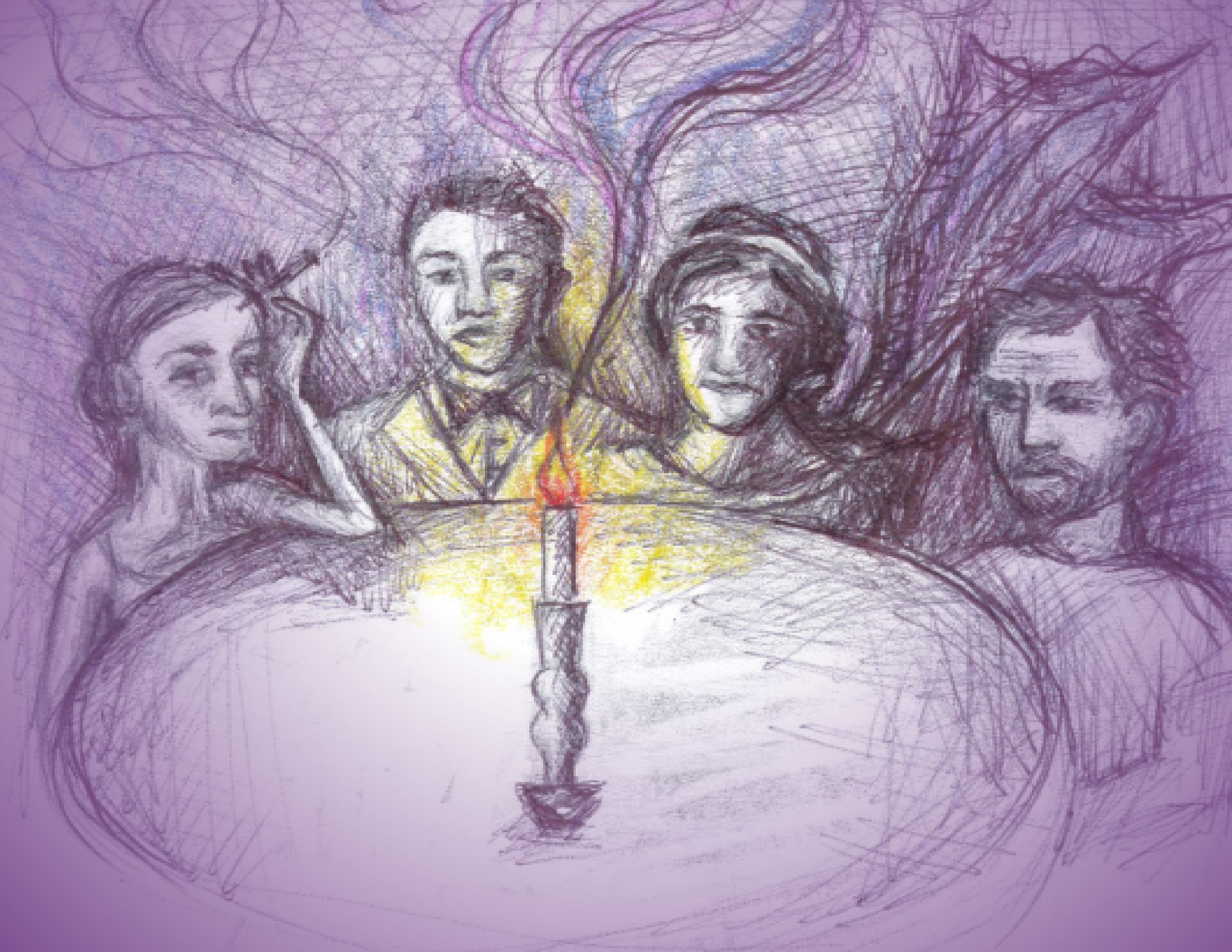 Submitted by Amethyst on
Submitted by Amethyst on

Derivative Images
We live in a fantastic time to be paranormal enthusiasts. Dozens of ghost hunting programs are currently featured on television. There are websites dedicated to developing and selling ghost hunting gear, and tourism for haunted locations is so high that hotels and restaurants often post their ghost stories right on their own websites. But, believe it or not, this isn't the first time that America has been captured by the mystique of ghosts and hauntings.
After Margaretta and Catherine Fox claimed to have made contact with a spirit in Hydesville, New York in 1848, a new movement quickly swept across the country: Spiritualism. Not to be confused with Spiritism (a movement started by Allan Kardec in the 1850s that was largely concerned with reincarnation), Americans were suddenly holding séances in their homes, playing with talking boards, and having parties all concerned with speaking to the dead.
While most of the ghostly activity of this period is associated with the use of mediums—people with the psychic ability to channel spirits and even allow them to temporarily possess them—there were also techniques used by the psychically challenged to interact with spirits, too. Many of these were quite effective and can even be used today by modern ghost hunters. Let's talk about a few of these.
Setting aside the use of a medium (a practice that is actually used by some paranormal groups today), the most common means of spectral communication by Spiritualists was a technique known as "table turning." Also known as table tilting, table tipping, and table tapping, this involved a group of people sitting around a small, light (usually round) table with their finger tips resting gently on the surface. A designated speaker would then ask questions from any spirits who were present and ask that he/she turn or tilt the table. Sometimes this would be more of a vibration than dramatic movement, but any activity would pretty much be interpreted as interaction. If a spirit was particularly energetic, the speaker might then ask questions with one-word answers, and then proceed to slowly say the alphabet. The spirit could then move the table when certain letters were said to spell out a word.
Today, this practice is simply known as table tipping, and I've seen it used in the field a number of times. In my experience it seems to work best when yes or no questions are asked and the spirit is directed to interact with the table to answer. For instance, the speaker might say, "Please let us know when what I say is correct. Did you live in this house?" If there was an answering movement involved with the table, it would be taken as a "yes."
Another simple, but effective, item that Spiritualists would use is the candle. In addition to lighting the parlor for a séance, candles were often used by a small group to indicate when a ghost was present. This typically involved placing a single candle on a mantle or table, eliminating any wind moving through the room by closing doors and windows, and then the Spiritualists sitting on the other side of the room (so nobody could inadvertently blow out the candle). A speaker would then entreat any spirits to indicated their presence by blowing out the candle.
I have to admit that this sounds like the premise for a low budget horror movie, on par with the old Bloody Mary legend, but it's actually quite viable for the present day with a small, but recommended, change. Instead of simply sitting the candle away from everyone, a better way to guard against accidentally blowing it out would be to surround it with glass or plexiglass—essentially sitting it inside a small, transparent box. You would, of course, still need to have the top open to allow the flame to burn, but with high enough walls you could be assured that any extinguished candles were not the result of a wandering breeze.
A popular variation of this technique is something that modern ghost hunters call the "Irish Wind Chime." Essentially it's exactly the same premise as the candle-in-a-cage, only you are placing a small set of wind chimes that are hanging from a mini stand under a glass "hurricane"-style cover. Since they are sitting in a micro, sealed environment, any movement of the chimes would be an indicator of a spiritual presence. Care just has to be taken to insure that nothing is shaking the area where the chimes are sitting.
The most controversial method used by Gilded Age ghost hunters was, without a doubt, the infamous "talking board." After frustrated Spiritualists got tired of the slow method of speaking to the dead by reading aloud the alphabet, it only goes to reason that some enterprising soul would think to simply write the letters and numbers on a table of sorts. The actual origin of the talking board is something of a mystery, but most historians agree that it began making appearances in parlors during the late 1880s.
What we now think of as the "Ouija Board" was first marketed by the Kennard Novelty Company in the early 1890s. Some have supposed that the name came from the combined French (oui) and German (ja) words for "yes," but talking board historian Robert Murch has stated that the name was supplied by a medium named Helen Peters who claimed she got the moniker from a spirit she communicated with via a board. She said that it meant "good luck."
Spiritualists loved the Ouija Board, and by 1893 it was a best selling novelty of the day. Interestingly, in order to sell the device to the public, the Kennard Novelty Company had to prove to the patent office that it worked. After a quick session where the board spelled out the name of the patent officer, it was granted its patent and the new craze began.
The modern version of the talking board, or Ouija Board (as Hasbro still markets it), might be made of plastic and cardboard vs. the original wood, but it essentially is the same. The alphabet, numbers, and words "yes, no, hello, and goodbye" adorn the board, while a planchette is used to communicate with spirits.
Just as they were used in the Gilded Age, two or more people are supposed to sit around the board with their fingers lightly touching the planchette. Questions are then asked and the planchette (hopefully) moves to the appropriate answers—sometimes spelling out words, dates, etc. During the late 1800s, the talking board was a popular parlor activity, with the only negative being the possibility that somebody among them was purposely pushing the planchette.
Today the board is still popular, but it has a bit of a mixed reception. Thanks to a few popular horror movies, and rather vocal followers of organized religion, many believe that these boards are "evil" and used, exclusively, to speak to non-human entities, such as "demons," "djinn," etc. This is, of course, nonsense. There is nothing inherently evil in a Hasbro board game—or any other incarnation of the talking board. Like most objects used to interact with the dead, there is nothing inherently good or bad about it.
In fact, the linking of the talking board with the occult and evil practices is a modern belief that began in the 1970s (with some pointing directly at the book/film The Exorcist as the cause). Before then, the most famous case involving a talking board is that of Pearl Curran who came into contact with a spirit named "Patience Worth" via a board. Curran would produce novels, poetry, and other prose all supposedly sourced from Patience Worth. But this is hardly anything of a sinister nature.
Much like practitioners at the turn of the century, you, too, can use a talking board while ghost hunting, but you might want to make sure that everyone present is okay with it before doing so. There's no sense in scaring or angering anyone. Ironically, I'd actually suggest using it without any human interaction. Since plastic is such a poor conductor of electricity/energy, there's really no need for anyone to place their fingers on the planchette. Just use the lightest planchette possible and ask any spirits present to move it. If anyone wants to "share energy" with spirits via a planchette, I'd suggest constructing one of copper or aluminum for better conductivity.
The last thing I'd like to touch on concerning Spiritualism is the concept of "debunking." While there were certainly hardcore followers who were quick to believe most everything was of a paranormal nature, there were also practitioners of the day who reveled in exposing fraudulent mediums, fakery, and criticizing the new practice of "spirit photography."
Much like today, one of the favorite tools of Victorian ghost hunters was the use of a camera. Taking photos before and during séances often produced images of spirits, and would sometimes capture live activity in the parlor, such as the appearance of "ectoplasm." People like famed illusionist Harry Houdini took great delight in debunking double exposures and ectoplasm that would actually be various substances, including cheesecloth and a potato starch/gelatin that was usually swallowed and then regurgitated during the séance.
In many ways, fake spirit photography in the Gilded Age is quite similar to modern ghost hunting photos and the appearance of "orbs." Thankfully, many of us take a cue from Mr. Houdini and take the time to scrutinize photos taken from haunted places—and we debunk our own photos that contain orbs that are nothing more than bits of airborne dust, pollen, etc.
So, while we may think of Spiritualism as a movement from the late 1800s—and perhaps a bit outdated—the truth is that we have taken a lot from our ghost hunting ancestors. And though we may be safe with throwing out some of their more outlandish forms of communicating with the dead (I don't think the "spirit trumpet" will be coming back into fashion any time soon), every time we ask a ghost to make a rapping sound for us, or take part in a table tipping session, we are continuing an American tradition. One that, thankfully, won't be ending any time soon.
Rich Newman - https://www.llewellyn.com/journal/article/2940
Copyright © 09-27-2021-2022 - Llewellyn Worldwide, Ltd.
- 910 reads